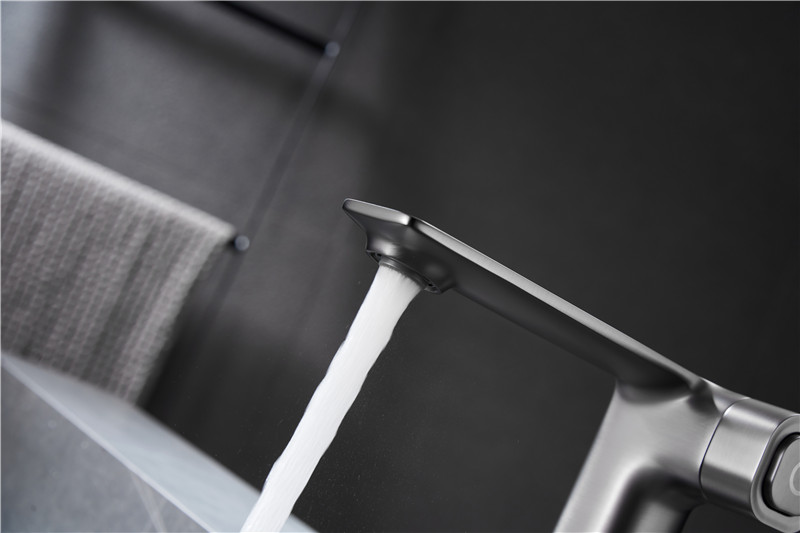The Hansgrohe Rainfinity 360, has unusual styling and comes in both concealed and exposed valves varieties with integrated shelving from €1,467, habitium.ie. 2.0 bar pressure minimum
Building new or flipping the bathroom to a luxuriant sanctuary? Exposed Mixer Shower

Here’s some refreshing advice together with some top shower choices to get deliciously drenched at home.
Understanding your bar pressure and matching it to a suitable shower is crucial to a pleasing drench.
If you have a fitful spit and weak pressure to the position of the newly renovated bathroom, this is the time to think about improving the rate of flow and pressure through the shower head.
It might even be the moment to install a whole-house solution. The water system you have - gravity-fed, combi boiler (high pressure vented) or unvented, will influence the type of shower you can successfully install.
Mains pressure to a combi-boiler or unvented system should deliver a good flow (quantity) and at least 1.0 bar pressure (the strength of the water through the outlet).
This will allow you to choose from a wide selection of thermostatic mixer showers and digital models with confidence.
With gravity-fed systems, low-pressure problems with shower outlets are common.
The distance between the bottom of the cold tank in the attic, and your shower head and taps is your “head”.
This will determine your water pressure. Anything under 1m of “head” will generally result in low pressure often with different flow rates to the hot and cold taps.
You can carry out a rough test of the water pressure with a stopwatch and measuring jug. First, check that any filter in the shower has been cleaned of debris and that the pipes you can access are not furred with limescale.
Place a 2l jug under a tap or existing shower. Turn the shower on for 6 seconds. Note the amount of water you catch in millilitres.
Times this by 10 and convert it to litres for your flow-rate (litres per minute). Anything under 10 litres per minute is regarded as low pressure.
A plumber with a dedicated gauge can finesse those results. 1.0 bar pressure or 10 litres per minute or better is regarded as high pressure.
Products: For under 0.5 bar without adding a pump, you will need to look carefully at shower specifications and forget about invigorating body jets.
With a small head, the Ideal Standard Alto EV Gravity-pumped, exposed chrome thermostatic mixer, can deliver a modest 4l per minute from 0.5 bar pressure. €212.95, screwfix.ie
Choose a shower under the bar rating of your available supply or pump it up.
You’ve got the power
If your water pressure is low, and there is nothing otherwise impeding the flow (quantity of water), don’t panic. There are proven solutions.
You can install a power shower (mixer) with a built-in pump, or your plumber can install a small pump dedicated to one thermostatic mixer shower.
This will require placing a pump (sized from around 1.5 bar) as close to the bathroom as possible. There’s a little wiring involved to power the unit, best done by your RECI sparks.
In some cases, this is a good opportunity to dig deeper and address low water pressure in the house as a whole with a larger pump.
This is sometimes easier than retrofitting a pump for one shower alone, depending on the ease of access to existing pipework.
With what is termed a twin-impeller, you can add pressure to both your hot and cold supply.
Ensure you address the issues of airborne and vibration noise, as a whole-house pump coming on in the hot press every time the shower or taps are turned, can be irritating (60db - 90db would not be unusual).
A dedicated pump mat can work wonders. Design and installation costs aside, expect to pay at least €450 for a 2-bar to 3-bar pump and several hundred more for premium models with a sound performance of 55db or less.
An electric pumped shower (heating water instantaneously) is often a last resort for low bar pressure and just cold feed.
Used with a timer, they are brilliant second shower choices for a busy family when the stored hot water supply is regularly stressed out (see our guide).
Products: If you are confined to a cold feed, and you have to go to an electric shower, you can still sing in the rain with showers including the Triton Amala Duelec 9.5kW Electric Shower with Rainfall Overhead and (diverted) Handset from Triton. Gorgeous in black, from €354.
Their T90 SR for gravity-fed systems is an excellent, change up from the older T90 range, with whisper-quiet operation in a 9kW pumped electric. From €260 in white, Topline Hardware
Putting your valve and supporting feed pipes for a shower on show is not simply an aesthetic decision.
Our taste for industrial design celebrates a bit of polished pipe. It’s certainly cheaper, and cheaper is not a dirty word.
Burying your valve and pipes in the walls and the ceiling (for overhead rose outlets) demands greater installation complexity and cost.
If something goes toes up, the tiles will have to be lifted and the wall opened. It makes more sense to install a concealed shower in a radical upgrade – this is a big job.
On the flip side, concealed showers save on the space of more prominent controls and a riser bar.
Still, that high, fixed head might be a deal-breaker with different heights in a family bathroom – consider a twin shower with a standard hand-held.
For a budget bathroom flip, an exposed valve is a quicker go-to solution. The components of the shower will get more of a beating on show – inevitably.
The latest finesse of digital thermostatic control, body jets and personal settings are all available in both styles of shower including exposed valve “shower-tower” panels (from €384 by Milano).
Products: To maximise the dancing room, think about a concealed shower for over a bath. Choices include the well-priced, three-outlet, Milano Nero - black thermostatic shower with shower head, overflow bath filler and riser rail with hand shower, €542.50, bigbathroomshop.ie
Try out the latest in ceiling-feed showers and digital control with the Mira Platinum Dual Digital Shower. Suited to high-pressure mains or combi-boiler. €1,300, tubsandtiles.ie
Pros and cons of combinations
The rain shower is something most of us first fell for in a hotel stay. A broad, square or round overhead rose not only delivers a more indulgent experience but reaching us over a wider circumference, it quickly drenches the body, and can provide a faster, shampoo-shedding shower.
It’s becoming increasingly clear that combination showers are now a standard with new bathrooms and renovations, and I’ve noticed far fewer choices in single shower heads on the showroom floors. So, what’s not to love?
First of all – talk to the family before you leap to a rain shower type set on the wall or ceiling.
I find the sensation of the water rattling on my head stressful and uncomfortable, as it threatens to knock out my contact lenses and send shampoo straight over my face.
That territory outside the direct fall of water we pause to lather, is blimin’ cold too.
Children and older family members may vouch for the secondary, directional shower-head, so don’t leave them struggling with a slender hand-held microphone if that’s the case.
Ensure you know your bar pressure and the size of any hot water storage tank, as a super-shower like this may demand an increased water flow, especially where larger feed pipes have been installed.
With good pressure, 10l to 15l per minute soon adds up. The broader spray will require a reasonably sized shower tray and suitable screening.
In the best instances, you should not feel a drop in flow when using the rain shower compared to your multi-directional, traditional head, but it’s in the smaller head that pressure will matter most.
Again, talk to your plumber at length to get the best result. Ensure every member of the family has at least 300mm overhead when in a rain shower, and around 400mm of elbow room.
Products: The sci-fi styled Hansgrohe Rainfinity 360 white 1-jet shower column is just that bit different. Features their award-winning PowderRain sensation and two shelves. 2-outlet thermostat required. €1467, habitium.ie
Hansgrohe combination showers starting at €510, various suppliers.
A good deal, the Sonas Onyx (square head) offers an exposed Thermostatic shower valve and diverted traditional head in chrome. 0.5 bar pressure. €455.
The company was recently released a new range of water saving shower, sonasbathrooms.com
Sign up to the best reads of the week from irishexaminer.com selected just for you.
Please click here for our privacy statement.
Sign up for our weekly update on residential property and planning news as well the latest trends in homes and gardens.
Keep up with the stories of the day with our lunchtime news wrap.
Discover the great outdoors on Ireland's best walking trails Start Exploring

Thermostatic Bath Shower © Examiner Echo Group Limited, Linn Dubh, Assumption Road, Blackpool, Cork. Registered in Ireland: 523712.
